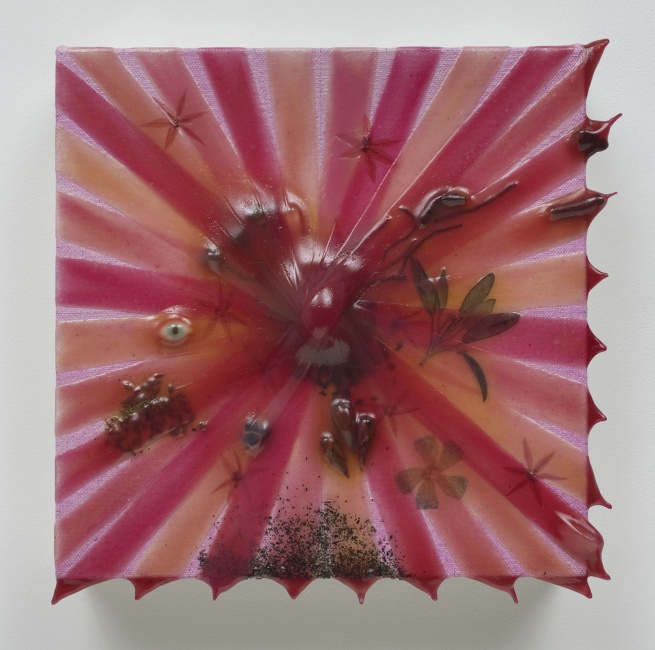Visionary currents circulate around “The Ocular Bowl,” a beautifully curated exhibition of paintings by Agnes Pelton, Linda Stark and Alex Olson. While each artist is separately well-known, this show illuminates their intersecting interests.

Agnes Pelton, Star Gazer (1929), courtesy of Kayne Griffin Corcoran.
Two paintings by Pelton historically anchor transcendental aspects of Stark’s and Olson’s work. It’s rare to see Pelton’s paintings on display anywhere, especially in commercial galleries; and Star Gazer (1929) and Passion Flower (1943) are both fine examples of her imaginative, mystical portrayals of desert landscapes and blooms.
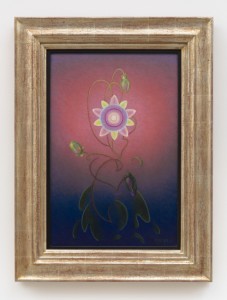
Agnes Pelton, Passion Flower (1943), courtesy of Kayne Griffin Corcoran.
Stark’s affinity to Pelton is clear in juxtapositions that highlight relationships between the two artists’ essentialized forms, floral and landscape motifs, and numinous themes. Whereas Pelton’s images are totemic but flat, Stark’s emphasis on sculptural tactility bespeaks her endeavors towards making her paintings actually become what they represent. Ruins (2008) depicts a pendant overlaid on a shirt printed with a cyclopean full moon over Stonehenge. The necklace is bas-relief; the pink shirt’s rich allover texture is more like that of a wall than a garment. The painting becomes a meta-talisman that questions yet refreshes the hackneyed nature of Stonehenge and the pendant’s potential mystical significance.
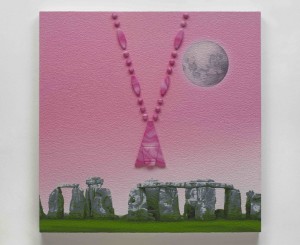
Linda Stark, Ruins (2008), courtesy of the artist and Kayne Griffin Corcoran.
Stark’s paintings present body parts as misplaced loci of perception; in Brand (2010), a navel looks ocular, and Spectacled Cobra (2005) spotlights the cartoonish face of the snake’s hood marking. By contrast, Olson focuses on inducing optical experiences and creating metaphors for the mechanics of sight and its relationship to the mind, as in Mind’s Eye (eyes open, eyes closed) (2016).

Linda Stark, Brand (2010), courtesy of the artist and Kayne Griffin Corcoran.
Whereas Stark reinterprets iconography of kitschy mysticism, Olson draws from lexicons of historic artworks and mental images. Focus (2016) conjures Op Art; Circuit (2016) recalls Neo-Geo compositions. In recycling painterly tropes for her perceptual investigations, Olson insinuates the iterative freedom inherent to the age-old practices of painting and phenomenological analogizing.
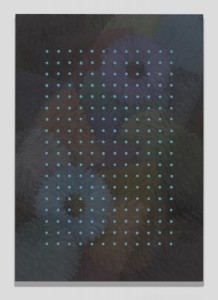
Alex Olson, Focus (2016), courtesy of the artist and Kayne Griffin Corcoran.
Though Olson’s are the only recent paintings, the show’s overall orchestration activates formerly latent qualities in each painter’s work, revitalizing appreciation of old pictures and enhancing context of new ones. Common motifs such as blossoms, vessels, and astronomical bodies resonate, as do core conceptions. All three artists celebrate the power of painting and visual imagination while acknowledging the limitations of both. Stark’s magic-charm diptych, Purple Protection Potion (2007) offers a fitting conclusion: Painting is alchemy.
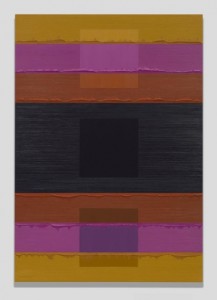
Alex Olson, Circuit (2016), courtesy of the artist and Kayne Griffin Corcoran.
Agnes Pelton, Linda Stark, and Alex Olson, “The Ocular Bowl,” April 2-May 28, 2016 at Kayne Griffin Corcoran, 1201 South La Brea Avenue, Los Angeles, CA 90019, www.kaynegriffincorcoran.com.

